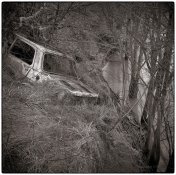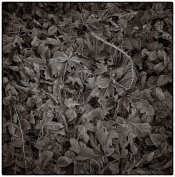removedacct1
Member
In the past year and a bit, I've sampled most of the readily-obtained B&W 120 format films to see which - if any - address my personal aesthetic needs and notions. At this point I am finding I like many different emulsions, but I can't say I've settled on any single film as far as tonality is concerned. (I'm looking for a film that has a broad and particularly luminous tonal scale - perhaps a bit unreasonable, since many films are no doubt capable of it if used under the right conditions. Recent examples of Neopan400 have struck a note with me, for instance)
However, I'd like to ask you folks if you feel that - for you - there is one particular 120 roll film that produces an especially tactile, engaging tonality more so than any other film. Speed isn't a huge concern, but I'm not likely to pursue a fast film (over 400 ASA) because I don't like coarse grain.
Here is a piece I shot yesterday on Tmax 100, processed in Rodinal 1:50, with my Minolta Autocord - I like the result, but I find there's something about the tonal scale that - for me - feels a bit "artificial". (Something about how the middle greys suddenly transition to higher values, perhaps?) Maybe Rodinal isn't doing me any favors here - I dont know. Sometimes I really like how Tmax100 delivers tonality, and other times it disappoints me. D like to find a film that feels more consistent/reliable to me. Whaddaya think?

However, I'd like to ask you folks if you feel that - for you - there is one particular 120 roll film that produces an especially tactile, engaging tonality more so than any other film. Speed isn't a huge concern, but I'm not likely to pursue a fast film (over 400 ASA) because I don't like coarse grain.
Here is a piece I shot yesterday on Tmax 100, processed in Rodinal 1:50, with my Minolta Autocord - I like the result, but I find there's something about the tonal scale that - for me - feels a bit "artificial". (Something about how the middle greys suddenly transition to higher values, perhaps?) Maybe Rodinal isn't doing me any favors here - I dont know. Sometimes I really like how Tmax100 delivers tonality, and other times it disappoints me. D like to find a film that feels more consistent/reliable to me. Whaddaya think?
















